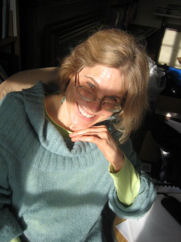The moorings at Brentford were not at all scenic, crowded by low rent flats overlooking the canal on one side, and a large office complex on the other. The most charming feature was an untidy coots’ nest floating on some detritus by a boat tied to the opposite bank.
But I have long since learned that charm is not all that this world has to offer. At Brentford moorings there were the most splendid, gloriously hot showers that we had encountered on our wanderings, and nice clean toilets too. All free and available to anyone with a British Waterways key (which comes with my license). There was also a coin operated laundry, and we were in brief, boaty heaven.
Pangolin has its own shower (and even a bath that fits little people), but the crew and I nevertheless took great pleasure in using Her Majesty’s Government’s shower, loo and laundry. We all went to bed feeling clean, and I went to bed embracing Socialism (almost, and since there was no one better).
In the morning we set off up the Grand Union Canal and met our first flight – where locks come in quick succession, one after the other, and the canal begins its rise towards the midlands. Grand Union locks are classed as “broad” with heavy double gates. Unlike on the Oxford, they will take two boats at a time, and after the first couple of locks we met another boat and worked the Hanwell flight together. I drove Pangolin and the other boat was also driven by a woman, while her husband crewed, which is a little unusual. The lock job takes weight and strength, nevertheless the men are mostly at the helm, leaving the women to manage the heavy work as best they can.
We drove in tandem, entering and leaving each lock together, and the conversation was a shouted staccato. With the gates closed behind us we set our engines to tickover, and Carol answered polite, opening questions: I’m a teacher, she said. John is a Civil Servant.
The crew raised first one paddle and then the other and the boats were thrown towards the back gates.
He’s a Physicist! She shouted as we both grabbed our throttles to counter the rush of water, filling the lock. More chat, then a nudge of reverse throttle to give the crew room to open the gates, before we set the gears to forward again; Mrs Crew was left to close the gates behind us, while the others had already set the next lock and opened the gates in front, ready for us to drive on.
With each lock we shared a little more information, our temporary intimacy rising with the canal. Water, words, throttle, water. I had cancer, she said. I had to give up work.
Seven locks, seven conversations. It might make a good play, except the set would be very silly.
At the top lock we parted company, and at the junction with the Paddington Arm the crew and I turned eastward under the bridge and continued our journey to London.
We stopped at Alperton at an unsavoury moorings by a supermarket. When I demurred, Mr Crew pointed out that two nice boats were also moored there, so I relaxed a bit (why would the baddies rob me when they could rob them?) But I worried a lot more when, before dark, the nice boats moved on and we were settled in for the night. A notice board by the supermarket said that the area was a designated alcohol free zone. What with the beer and gin bottles strewn about, it wasn’t reassuring.
Day 10 statistics: Brentford Gauging Lock to the Sainsbury’s at Alperton, 12 canal miles and 9 broad locks
















































